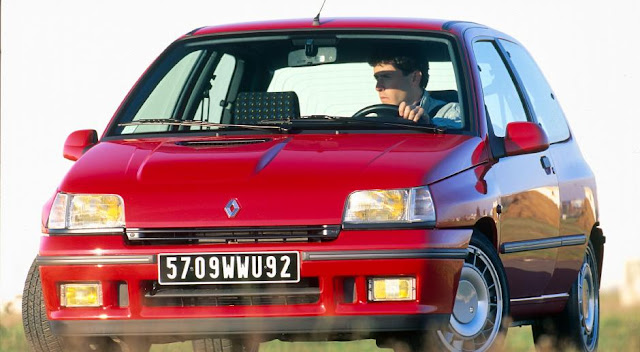Renault changed tack at the start of the 1990s, replacing the Super 5 with a Clio that revealed a fresh sense of direction, with its sports version undergoing nothing short of a metamorphosis.
Renault had already revolutionised motorsport by making the turbo engine a winner on the track, and the Clio’s arrival marked the beginning of a whole new era, with the marque’s little hot hatch being powered by a naturally aspirated 16-valve engine.
Renault presented the track version of the Clio 16s a few months before it hit the showroom, with that man Jean Ragnotti at the wheel for the demo drive at Nogaro in November 1990. By the following year, several dozens of them were out on the track, fighting it out for Clio Cup honours, which that year went to Patrick Bourdais, the father of future Formula Renault France runner-up, Formula One driver and four-time Champ Car winner Sébastien.
The Clio 16s went on to make its rally debut in May 1991. Approved as a Group A car, it teamed up with the evergreen Ragnotti to take second place in the French Championship.
The road version of the Clio 16s marked a departure from the past, offering an incredible driving experience for a car of its generation. Whereas the GTIs were somewhat spartan, the Clio 16s was modern and seductive and boasted accessories not normally seen in a car of its category.
Its sporty look was accentuated by an offset bonnet vent, while wheel arches were widened, wings were fashioned from a lighter composite material and the ride height was lowered.
Inside, meanwhile, bucket seats were the order of the day and instrument panel sported three centrally positioned dials.
Under the bonnet, the four-cylinder, 16-valve, 1764cc engine developed 140bhp at 6,500rpm, a figure that cranked up to 7,200rpm in the red zone. Boasting a top speed of 207 kmh, the Clio 16s went from 0 to 100kmh in 8.3 seconds and covered a kilometre in 29.6 seconds flat.
It was the chassis, however, that made the car what it is, while the suspension offered a comfortable everyday drive and the front axle was a benchmark in the field.
A year after its launch, the Clio 16s took a step forward with the addition of a catalytic converter. It was restyled in 1994, as the Clio 16s became the Clio 16v and acquired a fresh set of accessories, among them a driver airbag, an immobiliser and new rims.
Source: Renault Sport

